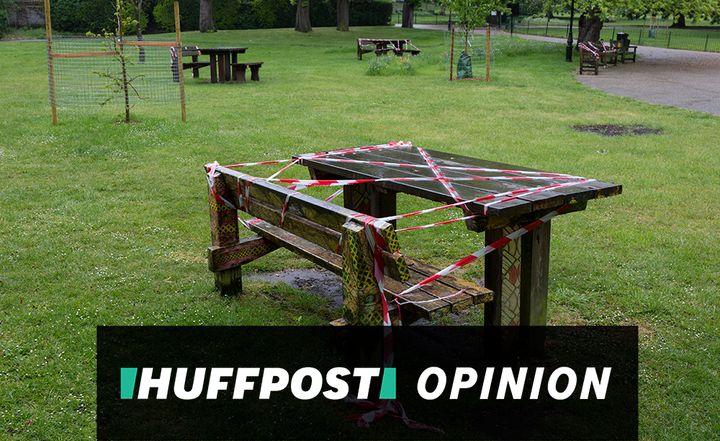
The coronavirus pandemic is a warning to us all: we must heal nature in order to heal ourselves. Don’t get us wrong: we are not advocating a “back to nature” movement or the dismantling of economic systems. But we believe that we can and should build back better. As governments around the world prepare massive stimulus plans to repair the damage of Covid-19 shutdowns, they should be harnessing the healing power of nature to build stronger, more resilient societies.
To carry on as before would be a colossal and costly mistake. If we continue with the unfettered destruction of our natural environment, Covid-19 will not be the last pandemic to upend our lives.
Get the latest on coronavirus. Sign up to the Daily Brief for news, explainers, how-tos, opinion and more.
This is because pathogens such as Covid-19 have a tendency to jump from wildlife to humans when we encroach on their natural habitats. Sudden Acute Respiratory Syndrome (SARS), which spread through Asia in 2002-3, is attributed by virologists to contact with the civet cat. Ebola in West Africa may have originated in primates or fruit bats. The US Centers for Disease Control and Prevention estimate that 75 percent of “new or emerging” diseases originate in wildlife[1]. These new pathogens are able to jump species because of closer contact with humans due to deforestation and the destruction of other natural habitats, and the trade in wild animals.
It is time to fix our relationship with nature; to learn to work with it, instead of destroying it. We need to value the planet’s natural life-support systems, even if we cannot always put a monetary value on what they do. Without pollinating insects, for example, 35 percent of our global crops would not exist. Economists may debate the exact value of ecosystem services, but there is little doubt that nature does a lot of heavy lifting for us.
If we are smart, we should be able to do three things: put an end to the destruction of natural habitats; restore those that are degraded; and harness nature-based solutions to our built environment.
Urban planners, engineers and environmentalists, for example, are figuring out how to harness the power of nature to build more resilient cities. These nature-based solutions can be as simple and straightforward as Toronto and Montreal’s tree planting schemes to increase shade cover in Canada; or the greening of Chicago’s rooftops in the US – an initiative that has been credited with helping to slow storm-water runoff by 36 percent[2]. To reduce the risk of flooding, Shanghai and other urban centers in China are experimenting with “sponge districts”. These are laid out with green parks, water gardens, permeable pavements, green rooftops and underground reservoirs. The goal is for sponge districts to capture, reuse or absorb up to 80 percent of storm-water runoff in China’s urban areas by 2030.
Nature-based solutions are also being deployed to restore shorelines and to protect island and delta communities from rising sea levels.
For example, Canada is restoring saltmarshes and improving dykes along the Bay of Fundy in Nova Scotia to reduce coastal flooding for tens of thousands of residents and businesses, and more than 20,000 hectares of farmland. The project is being financed by Canada’s CAN$2 billion Disaster Mitigation and Adaptation Fund, which was set up to enable communities to better manage risks from natural hazards like floods, wildfires and droughts.
In other parts of the world, restoring mangrove forests – which have lost 50 percent of their cover over the past 50 years[3] – has become a matter of life and death. Mangrove forests are the first line of defense against rising sea levels in the Marshall Islands and other coastal communities, and they provide a life-saving buffer against storm surges and cyclones across much of South East Asia. Once restored, these sea-water forests become a habitat for shrimp and crabs that provide livelihoods for local fishermen, and they are two to five times cheaper than building engineered structures[4]. Furthermore, mangrove forests act as carbon sinks that help absorb our global CO2 emissions.
In fact, some studies suggest that nature-based solutions could provide up to one-third of the CO2 reductions needed between now and 2030 to keep the increase in global temperature below 2°C[5] – the critical limit to avoid catastrophic global warming, according to UN scientists.
So as governments prepare to deal with the economic fallout from Covid-19, we urge them to put nature-based solutions and climate adaptation at the heart of their recovery plans. To do anything less would be to succumb to a crisis that will eventually have far more devastating consequences for humanity than Covid-19.
Nature-based solutions will help put a stop to the loss of biodiversity; they will strengthen communities against flooding and other natural disasters, and they will help protect the world’s poorest – those who directly depend on nature for their livelihoods. They could protect hundreds of millions of people from the risks of climate change while delivering positive economic, social and health benefits – not least, reducing the risk of another pandemic. What’s not to like?
Ban Ki-moon is the 8 Secretary General of the United Nations. Patrick Verkooijen is CEO of the Global Center on Adaptation.